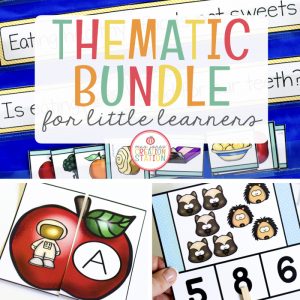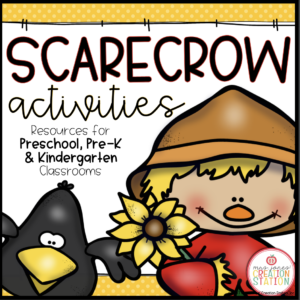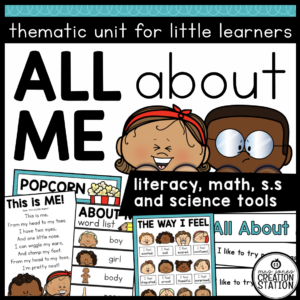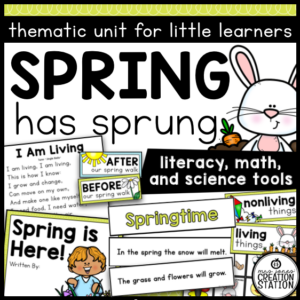Menu
Bring the tradition of Christmas to your classroom! Learn about the many traditions of the Christmas holiday from the Christmas tree all the way to the Christmas candy cane!
Use the detailed lesson plans and suggested read alouds to help guide your instruction! Make a fact book about the traditions of Christmas: Christmas tree, Christmas presents, Christmas cards and many others! Use the literacy and math centers during your small group teaching time.
Here is what you’ll get:
-Detailed lessons plans that are easy to read and follow
–Daily slides to guide your teaching
-A list of suggested read alouds with links
–Shared Reading and Writing activities
-Directed Drawings
-Emergent Readers
-Interactive Poems
-A week of thematic activities
-Math Centers
-Literarcy Centers
**CHECK OUT THE PRODUCT PREVIEW!
This unit is a great social studies unit that makes integrating literacy and math a breeze! Buy the BUNDLE and SAVE! You can purchase this resources in the Thematic Activities for Little Learners Bundle and the Little Learners Mega-Bundle!
⭐⭐⭐⭐⭐ What Teachers Are Saying:
“Thank you! There are some GREAT activities in here that I will be able to add into my centers to add some great practice on math and literacy skills. Great work!” –Preschool Everyday
“My students loved using these Christmas themed activities in kindergarten.” –Jessica G.
“Great resource as are all of the resources from Mrs. Jones Creation Station. So many things to do and all are so easy to put together. Just love everything she does.” –Rebecca D.
YOU MIGHT ALSO LIKE
Gingerbread Man on the Move Unit
WEBSITE | FACEBOOK | INSTAGRAM | PINTEREST | TEACHERS PAY TEACHERS
© Mrs. Jones’ Creation Station, Inc
How can I see what is new in the MJCS store?
Be the first to know about new discounts, freebies, and new products. You can also subscribe to our newsletter to receive access to resources only available to MJCS subscribers, as well as, special offers and ideas!
How can I get credit for my TpT purchases?
Go to your account button at the top of the page. Under the “Buy” section, click “My Purchases “. Beside each purchase you’ll see a Provide Feedback button. Simply click the button and you will be taken to a page where you can give a quick rating and leave a comment for the product. Each time you give feedback, TpT gives you feedback credits that you use to lower the cost of your future purchases. Please leave detailed feedback for each resource, so we are able to create better resources for teachers and students.
How can I find a certain activity in a large PDF file?
If the resource you purchase has a variety of activities compiled into one PDF find the table of contents and click on the activity title. This should take you to that specific activity in the resource.
What can I do if I have a question about a resource?
If you have any questions regarded a resource before purchasing please email me at mrsjonescreationstation[at]gmail.com. Once you have purchased the resource you may use the “Product Q and A” tab on the product page to ask a question, as well.
How do I know if a resource has been updated?
Go to your account button at the top of the page. Under the “Buy” section, click “My Purchases “. Choose to “sort by: recently updated” to see what resources have been updated since you downloaded them last. You can download any updates from there. If a file has been updated, you will see a notification under the resource that says “Newly Updated – Download for Free!”
This item is a paid product created by Mrs. Jones’ Creation Station, Inc. Copying any part of this product, redistributing, selling or placing it on the internet in any form is strictly forbidden and is a violation of the Digital Millennium Copyright Act (DMCA). Thank you for respecting our work!
YES, YOU CAN…
NO, YOU CAN’T…
Click here for a detailed post with step-by-step directions.
You will need to download fonts specified in the resource and install it on your computer before downloading the editable file.
Install the most recent version of Adobe Reader onto your computer. If you have any problems editing, viewing or printing a file make sure your Adobe Reader is updated.
Now you can download the file to your computer. Once the file has downloaded open in Adobe Reader. You should be able to view the editable fields and the text should match the product description. If you have any problems editing the file, make sure you have followed the directions above and then contact me at mrsjonescreationstation[at]gmail.com




